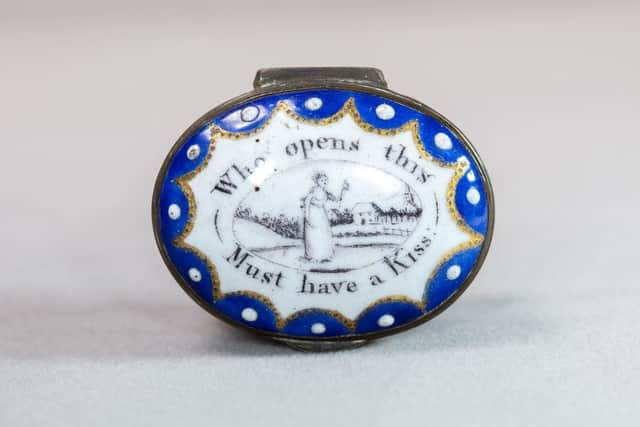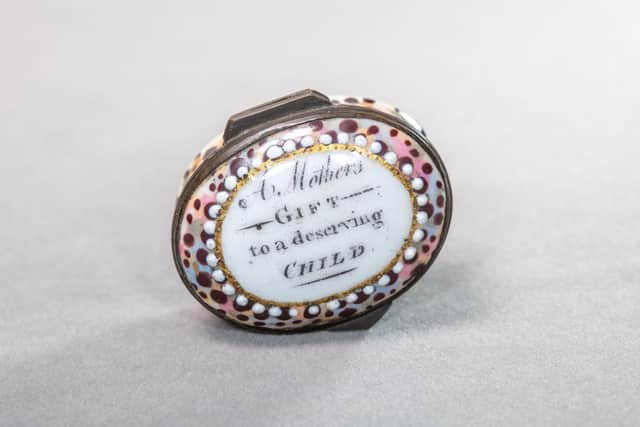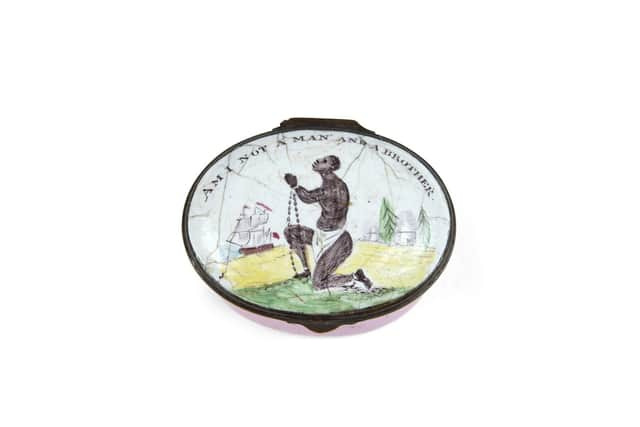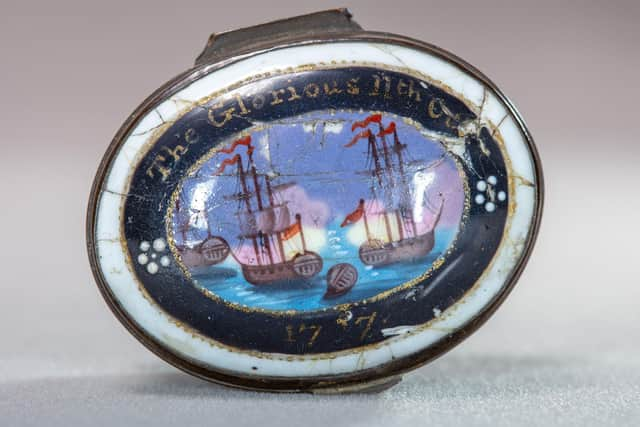Charting the fashion history of 'beauty spots' such as Marilyn Munroe's and the intricate patch boxes they inspired in virtual Yorkshire exhibition
Supermodel Cindy Crawford’s beauty mark was natural, while Dita Von Teese wanted one so badly she had hers tattooed on.
The wonder of the beauty spot has through history had its rise and fall in the tumbling halls of fashion, so much so that it inspired a whole industry to surround it.
Advertisement
Hide AdAdvertisement
Hide AdNow the boxes designed to house those first manufactured ‘patches’ are to come centre stage in a virtual exhibition.


Small enough to hold in the palm of your hand, the popularity of the patch boxes outlived early trends to become collectibles in their own right.
Now as a Digital Museum of Dress Accessories (DMDA) is launched, dedicated to dress and fashion accessories, it tells the story of the patch and its accompanying container.
“There was a box for every need or occasion,” said Dr Susan Vincent, co-lead and research associate at the Centre for Renaissance and Early Modern Studies at the University of York.


Advertisement
Hide AdAdvertisement
Hide Ad“Their designs covered everything from mawkish sentimental slogans to jokes and political issues - and even executions.
“The boxes can be so much more interesting than the patches themselves.”
Natural beauty spots, such as Marilyn Monroe’s and Madonna’s, are facial pigment marks. On a pretty face, said Dr Vincent, they can add a “punctuation mark, some ‘oomph’, that raises bland perfection to an alluring intrigue.
“As does so much about fashion, it depends on who is wearing it and who is looking,” she added. “It’s that playfulness too, that sense of ‘dressing up’.”


History
Advertisement
Hide AdAdvertisement
Hide AdAs early as the 16th century they were manufactured as ‘patches’, cut from silk or velvet, and used to hide a sore or a scar hinting at valour and bravado.
Soon they rose in fashion, housed in luxurious boxes of tortoiseshell and gemstones as collectibles in miniature. Cheaper varieties were soon produced and a mass market was born.
It is these enamelled boxes of the 18th and 19th century, said Dr Vincent, that are “so fantastic” and fascinating. Some had slogans or poems, some called for an end to slavery, while the strangest she has encountered dated from 1793 and featured an image of Louis XVI as his head rolled under the guillotine.


While museums globally have patch boxes they are distributed under different banners, featured under an aeronautical theme at the Smithsonian and design at the Vatican.
Exhibition
Advertisement
Hide AdAdvertisement
Hide AdThis new virtual exhibition brings them together for the first time in their own right.
Co-lead on the project, Dr Cordula van Wyhe from the Department of History of Art said: “When we started looking we were unsure what we would discover, but it turned out that these charming little boxes tell big stories.”
Patches and Patch Boxes is the first virtual exhibition from the Digital Museum of Dress Accessories (DMDA), devoted to exploring the history of fashion.
Partnering with with York Castle Museum and the Leeds Museums, and funded with grants from the University of York and York Impact Accelerator Fund (YIAF), the scheme looks to expand exhibition into a range of histories such as parasols and umbrellas, cigarette cases, and skirt-lifters.


Advertisement
Hide AdAdvertisement
Hide Ad_________________________________________________________________________________
Support The Yorkshire Post and become a subscriber today. Your subscription will help us to continue to bring quality news to the people of Yorkshire. In return, you'll see fewer ads on site, get free access to our app and receive exclusive members-only offers. Click here to subscribe.
